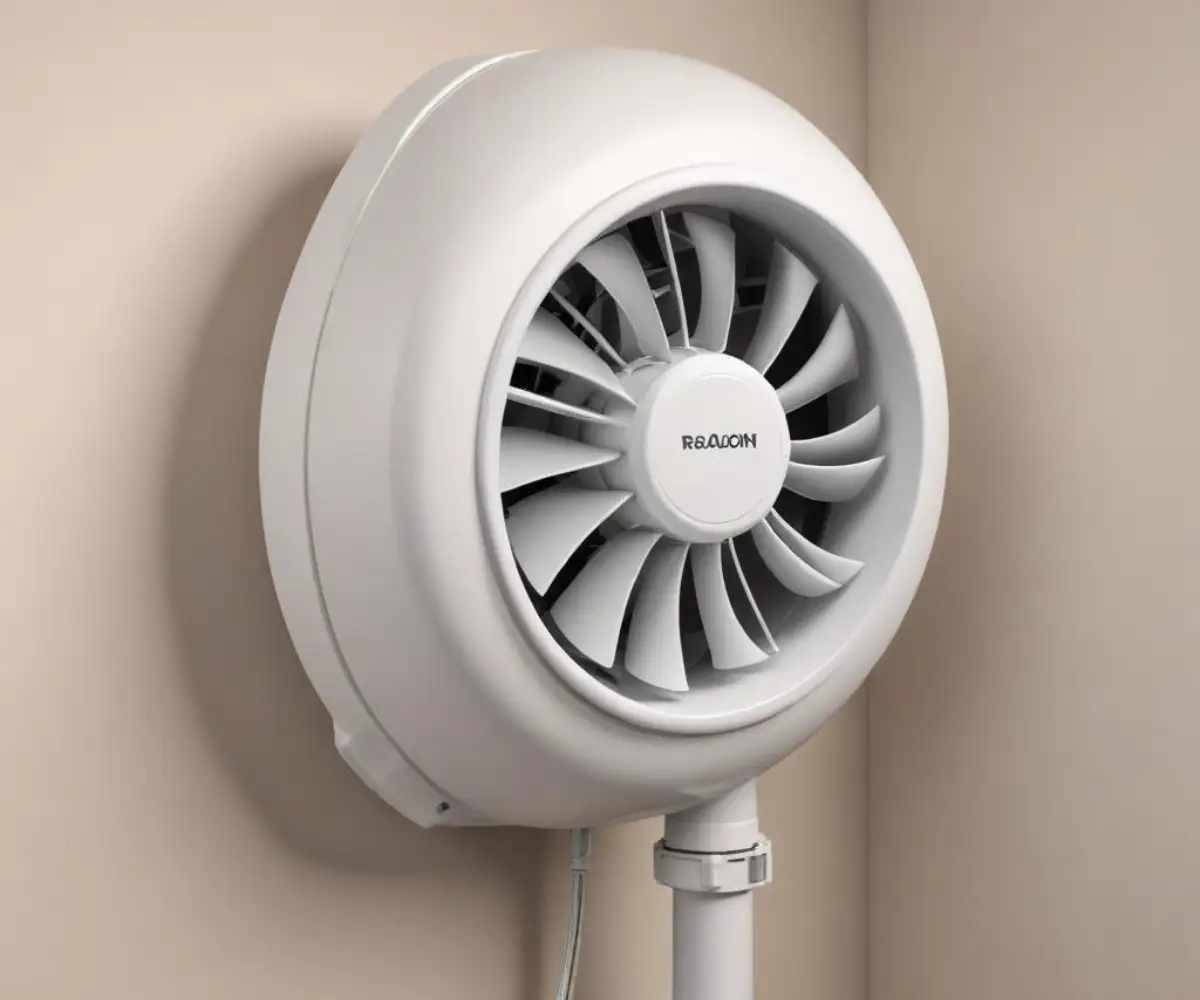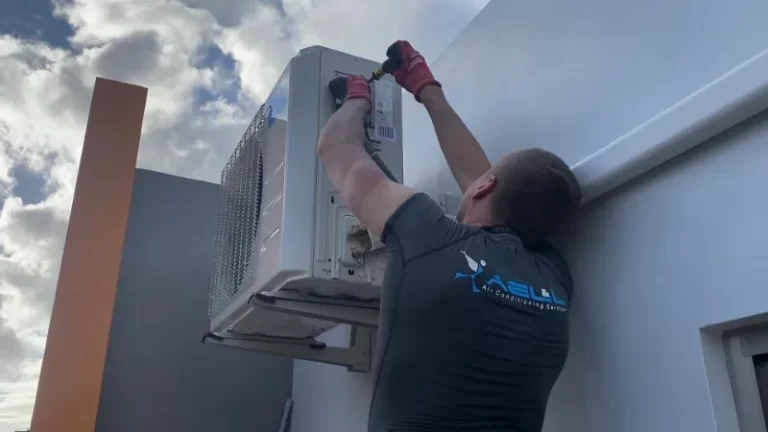Quiet Radon Fan: Your Ultimate Guide to a Silent, Safe Home
You’ve done the responsible thing and installed a radon mitigation system. But now, instead of worrying about invisible gas, you’re dealing with a very audible problem: a constant, annoying hum. That radon fan, working tirelessly to protect you, has become a source of daily frustration, disrupting your peace and quiet.
A noisy radon fan isn’t just a minor inconvenience; it can affect your sleep, concentration, and overall enjoyment of your home. The good news is that a safe home does not have to be a noisy one. This guide will explore every facet of achieving a whisper-quiet radon mitigation system, from choosing the right fan to advanced installation techniques that eliminate noise at its source.
You'll Learn About
Why Your Radon Fan is So Loud: Uncovering the Source of the Noise
Understanding the cause of the noise is the first step toward silence. Radon fan noise generally falls into two categories: airborne noise, which is the hum of the motor and rushing air, and structure-borne noise, which is the vibration transmitted through your home’s framework.
The Fan Itself: Motor and Blade Design
The primary source of noise is the fan’s motor and impeller blades. Lower-quality fans may have imbalances or less aerodynamic designs that create more turbulence and sound. The power of the fan also plays a significant role; a high-wattage fan designed for difficult mitigation jobs will inherently be louder than a smaller, more efficient one.
Fan noise is often measured in sones or decibels (dBA). A lower rating indicates a quieter fan. For comparison, a modern refrigerator typically operates at around 50 dBA, a level most people find unobtrusive. Many quiet radon fans are designed to operate well below this level.
Installation Flaws: The Hidden Noise Amplifier
Even the quietest fan can become a nuisance if installed improperly. Poor installation is the most common cause of excessive radon system noise. Vibrations from the fan motor can travel through the PVC piping and mounting brackets, turning your walls, floors, and ceilings into giant speakers.
If the pipe is rigidly attached to joists or wall studs, the vibration will be amplified throughout the house. This is why a fan that seems quiet outdoors can create a resonant hum indoors, especially in rooms adjacent to the piping route.
System Age and Wear: When Good Fans Go Bad
Like any mechanical device, radon fans wear out over time. The average lifespan of a radon fan is about eight years, though some can last much longer if they run continuously. As the motor bearings wear down, they can produce a high-pitched whine or grinding noise, which is a clear sign that the fan needs replacement.
Noise can also increase if the fan becomes unbalanced due to debris or, in colder climates, ice buildup. If your system suddenly becomes louder, especially in winter, it might be a sign of a problem beyond normal operational noise. For those specific issues, understanding why a radon fan is loud when cold can provide targeted solutions.
The Ultimate Quiet Radon Fan Buyer’s Guide
Achieving a silent system starts with selecting the right equipment. If you’re installing a new system or replacing an old, noisy fan, prioritizing quietness during the purchasing phase is critical. Modern fans are more efficient and quieter than ever before.
Decoding Noise Ratings: Sones vs. Decibels (dBA)
When comparing fans, you’ll see noise levels rated in sones or dBA. A sone is a linear measurement of loudness; 2 sones is twice as loud as 1 sone. Decibels use a logarithmic scale, which can be less intuitive. For most homeowners, looking for a low sone rating is the simplest way to identify a quiet fan.
Aim for fans with the lowest possible noise rating that still meet the airflow and pressure requirements for your home. A professional mitigator can determine the necessary fan power based on your home’s specific sub-slab conditions.
Top Features to Look For in a Quiet Fan
When shopping for a quiet radon fan, go beyond just the noise rating. Look for models with features designed for silent operation, such as electronically commutated (EC) motors, which are more efficient and quieter than older AC motors. Also, consider fans with vibration-dampening housing materials.
Energy efficiency is another key indicator. Fans that use less wattage tend to be quieter because they are engineered for smoother, more efficient operation. Choosing an energy-efficient model not only reduces noise but also saves money on your electricity bill over the fan’s lifetime.
| Feature | What to Look For | Why It Matters for a Quiet System |
|---|---|---|
| Noise Level | Low Sone or dBA Rating | Provides a clear, standardized measure of the fan’s operational loudness. The lower, the better. |
| Motor Type | Electronically Commutated (EC) Motor | EC motors are more energy-efficient and run significantly quieter and with less vibration than traditional AC motors. |
| Housing Material | Vibration-Dampening Plastic or Composite | Reduces the transfer of motor vibrations to the fan housing and connected pipes. |
| Energy Consumption | Low Wattage | Lower power consumption often correlates with quieter operation and results in long-term cost savings. |
| Fan Sizing | Professionally Sized for Your Home | An oversized fan is a common source of noise. Proper sizing ensures effective mitigation without excessive power and sound. |
Installation Secrets for a Whisper-Quiet Radon System
Choosing a quiet fan is only half the battle. Proper installation is crucial to prevent noise transfer and amplification. These techniques focus on isolating the fan and the piping system from your home’s structure, a concept known as acoustic decoupling.
Strategic Fan Placement: Location is Everything
Where the fan is installed has a massive impact on indoor noise levels. The best locations are outside the main living envelope of the house, such as in an attic, a garage, or on an exterior wall. Whenever possible, avoid placing the fan near bedrooms or home offices.
The configuration of the pipes also matters. Long, straight runs of pipe leading to and from the fan help create a smoother, less turbulent airflow, which reduces noise. For exterior systems, consider mounting the fan on a side of the house away from decks, patios, or frequently opened windows.
Mastering the Mount: How to Stop Vibrations Cold
This is where the most significant noise reduction happens. The goal is to completely isolate the fan’s vibrations from the building structure. This can be achieved through a few key components and techniques.
First, always use flexible rubber couplings to connect the fan to the PVC pipes. These act as shock absorbers, creating a break in the pipe that stops vibrations from traveling down the line. Many professionals consider low-durometer (softer) couplings to be particularly effective at isolating vibration.

Second, use vibration-dampening mounting brackets to secure the piping. Never attach a pipe clamp directly to a floor joist or wall stud. Instead, use specialized brackets with built-in rubber isolators or place a piece of rubber or foam between the clamp and the structural member.
The Power of Silencers and Mufflers
For systems that require a more powerful fan, a radon fan muffler or noise suppressor can be an effective addition. These devices are installed on the exhaust side of the fan and are designed to reduce the sound of the air as it exits the system.
Mufflers work much like the muffler on a car, using internal baffles or acoustic foam to disrupt and absorb sound waves. They are particularly effective at reducing the “whooshing” air noise that can be bothersome if the exhaust pipe is located near a backyard living space or a neighbor’s property.
Advanced Soundproofing Techniques for a Silent Home
To take your soundproofing to the next level, you must think of the radon system not just as a fan and pipes, but as an entire assembly that can transmit sound. Every component and connection point offers an opportunity for noise reduction.
The System as a Whole: Beyond the Fan
The PVC pipe itself can act like a conduit for sound, carrying the fan’s hum throughout the house. This is especially true for systems running through interior walls or closets. To combat this, you can wrap the pipes in sound-dampening materials like acoustic foam or fiberglass pipe insulation.
In some cases, the type of mitigation system can influence noise. For instance, a system pulling air from beneath a concrete slab has different acoustic properties than one designed for a house with a crawl space. Homes that require a radon mitigation system without a sump pump may have unique piping configurations that require careful planning to keep quiet.
Sealing the Deal: Air Gaps and Penetration Points
Sound can easily leak through small gaps and cracks. Pay close attention to the points where the radon pipe penetrates walls, floors, or ceilings. Seal these openings thoroughly with acoustic caulk or spray foam.
This is also relevant for overall home health, especially in areas like the basement or crawl space. A well-sealed home is more energy-efficient and has better air quality. For instance, addressing crawl space dryer vent problems is part of a holistic approach to maintaining a healthy and comfortable home environment, just like managing radon system noise.
Long-Term Maintenance for Lasting Quiet
A quiet radon system today should remain quiet for years. Regular, simple checks can help you catch potential issues before they become loud problems. A fan that suddenly becomes noisy is often an indicator that it’s failing or the system is not functioning correctly.
The Annual Quiet-Check Routine
Once a year, take a few minutes to inspect your system. Listen for any new or unusual sounds, such as rattling, grinding, or a change in the motor’s pitch. Place a hand on the fan and the pipes to feel for excessive vibration.
Also, check that all mounting brackets and clamps are still secure. Over time, vibrations can cause fasteners to loosen. Finally, ensure the system’s exhaust point on the roof is clear of leaves, nests, or other debris that could obstruct airflow and cause the fan to work harder and louder.
When to Call a Professional
While many soundproofing measures can be done by a handy homeowner, some issues require professional attention. If your fan develops a sudden, loud grinding or whining noise, it’s likely a sign of bearing failure, and the fan should be replaced promptly.
If you make adjustments to your system or replace the fan, it is crucial to re-test your home’s radon levels to ensure the system is still working effectively. A professional can verify that your mitigation efforts haven’t compromised the safety of your system.
Conclusion: Reclaiming Peace and Quiet in Your Home
A radon mitigation system is a vital component for a healthy home, but its operation should never come at the cost of your tranquility. By making smart choices during purchase, employing meticulous installation techniques, and performing basic maintenance, you can ensure your system is both effective and virtually silent.
From selecting a low-sone fan and isolating it with rubber couplings to wrapping pipes and installing a muffler, the power to silence the hum is in your hands. A quiet, safe home is not only achievable—it’s something every homeowner deserves.

